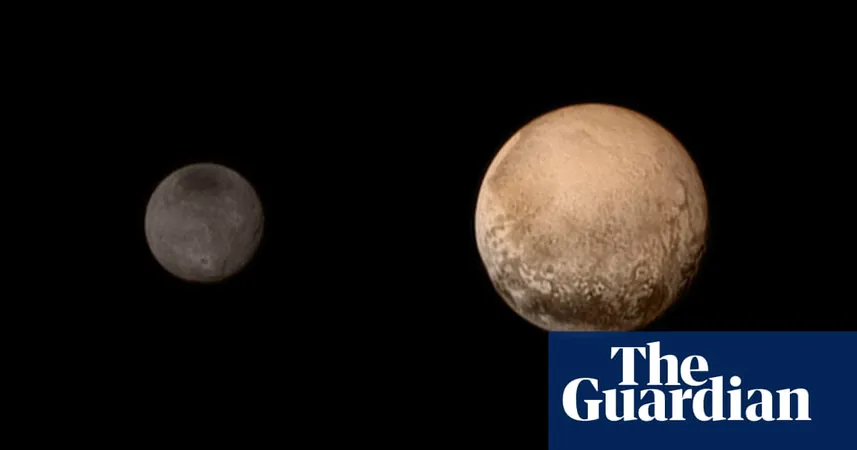
The Surprising Origin of Pluto's Largest Moon: A New 'Kiss-and-Capture' Theory!
2025-01-06
Author: Yan
Introduction
Scientists have unveiled a groundbreaking theory that could explain how Pluto acquired its largest moon, Charon, and it sounds like something out of a fantastical storybook! Once deemed the ninth planet in our solar system, Pluto has now been reclassified as a "dwarf planet," but it still holds fascinating secrets within its orbit.
Understanding Pluto and Its Moons
Pluto boasts a total of five known moons, with Charon being the standout, measuring approximately 754 miles in diameter—more than half of Pluto's size. Unlike Earth, where our moon orbits the planet, Charon and Pluto are locked in a unique dance, orbiting each other like cosmic partners in the far reaches of the Kuiper Belt, which lies beyond Neptune's orbit.
The Kiss-and-Capture Theory
The new theory, presented by a team of experts, suggests that Pluto and Charon experienced a "kiss-and-capture" event, a phenomenon where Charon collided with Pluto, causing both celestial bodies to rotate in unison for a fleeting moment. Imagine two giant snowpeople spinning together before they ultimately separate! This collision would have allowed them to exchange some material, preserving their distinct forms.
Insights from Dr. Adeene Denton
Dr. Adeene Denton from the University of Arizona, the lead author of the research published in *Nature Geoscience*, explained that due to Pluto's rapid rotation before the impact, Charon was able to be "pushed" outward, slowly migrating into its current orbit. This is a stark departure from previous theories that posited Charon was formed from a massive collision with another object, which would have mixed the two bodies' materials like blobs in a lava lamp.
Rethinking Celestial Collisions
What's particularly striking about Denton's findings is the emphasis on the inherent strength of Pluto and Charon. While earlier models treated these celestial bodies like fluids during collisions, the team's simulations revealed that, being composed of rock and ice, even slow collisions would result in solid material responses. This subtle but crucial insight redefines our understanding of their interaction.
Implications for Pluto's Smaller Moons
As scientists continue to explore this new theory, there’s speculation about whether Pluto's smaller moons were formed from debris created during this impactful kiss. Furthermore, the collision's heating effects might have influenced both Pluto and Charon’s geological histories, potentially leading to the existence of subsurface oceans.
A Broader Context
Denton also pointed out that this "kiss-and-capture" event may not be unique to Pluto and Charon. In fact, eight out of ten of the largest objects in the Kuiper Belt have large satellites, hinting that such events could have been prevalent during the formation of our solar system.
Conclusion
So, as we gaze at the icy realms of the Kuiper Belt, we may be witnessing the remnants of an ancient dance between giants—a cosmic tale of collision and companionship that reshapes our understanding of these distant worlds! Stay tuned as astronomers continue to unravel the mysteries hidden in the depths of our solar system!


 Brasil (PT)
Brasil (PT)
 Canada (EN)
Canada (EN)
 Chile (ES)
Chile (ES)
 Česko (CS)
Česko (CS)
 대한민국 (KO)
대한민국 (KO)
 España (ES)
España (ES)
 France (FR)
France (FR)
 Hong Kong (EN)
Hong Kong (EN)
 Italia (IT)
Italia (IT)
 日本 (JA)
日本 (JA)
 Magyarország (HU)
Magyarország (HU)
 Norge (NO)
Norge (NO)
 Polska (PL)
Polska (PL)
 Schweiz (DE)
Schweiz (DE)
 Singapore (EN)
Singapore (EN)
 Sverige (SV)
Sverige (SV)
 Suomi (FI)
Suomi (FI)
 Türkiye (TR)
Türkiye (TR)
 الإمارات العربية المتحدة (AR)
الإمارات العربية المتحدة (AR)